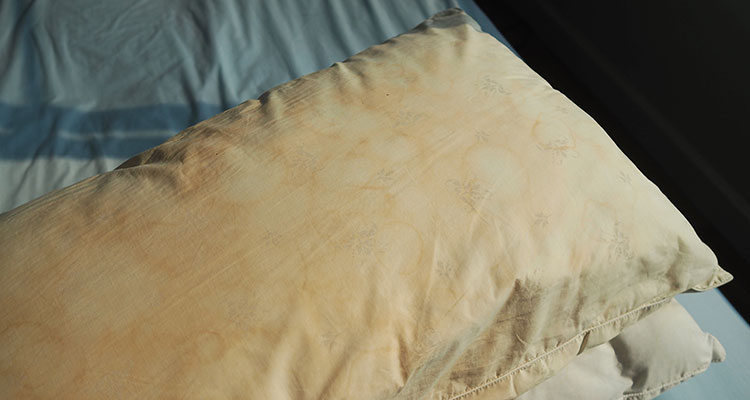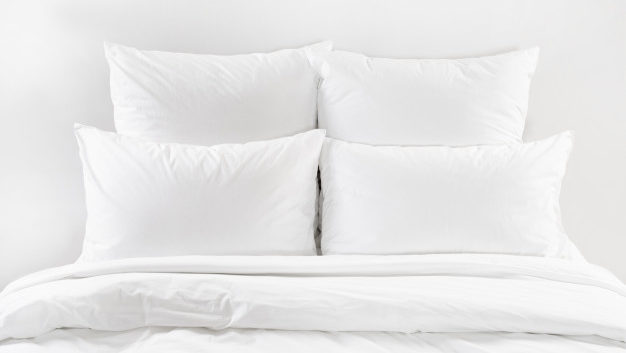How Often Should You Replace Your Pillows?
Almost all people forget their pillows need replacing. You wake up one day to find that you’ve been sleeping on the same pillow for five years or more.
Is that okay?
No, it’s not!
The question is, how often should you replace your pillows? As a general rule of thumb, most pillows need replacement after 1–2 years of usage. However, it depends on the type of pillow stuffing you’re sleeping on. Some types of pillows last longer than others, so you won’t need to replace them as often.
Stick around to know when you should replace your pillows.
How Often Should You Actually Replace Your Old Pillows With New Ones?
It depends on the type of pillow you’re sleeping on. The longest-lasting pillows are made of latex; they only need replacing every 3–4 years, giving you enough time to pick a new one!
After latex comes buckwheat pillows, which need replacing after three years. Both memory foam pillows and feather pillows will need replacing after 2–3 years, depending on your usage and their state.
Meanwhile, down pillows can last for more than two years, and the synthetic version of them stays usable for 18–24 months. Lastly, polyester pillows are the most frequently-replaced type, needing replacements every one year or less.
Signs Your Pillow Needs Replacement
How will you know that your pillow needs replacement? There isn’t a definite time period after which you should change them; there are only ranges. So, you should know when your pillow is saying goodbye.
Here are the most apparent cues that your pillow needs replacement.
It Doesn’t Bounce Back
There is something with pillows called ‘the folding test.’ When you want to know whether your pillow needs replacing, you grab it and fold it in half. Then, you let it bounce back. If it returns back to its previous form with ease, then you’re okay to keep using it.
On the other hand, if it doesn’t pop back on its own, then it’s too far gone. You should also feel this while sleeping. If the pillow doesn’t bounce back after you remove your head from it, it needs replacing.
It’s Affecting Your Breath
Sometimes, pillows are full of dust mites or mold and mildew, and you don’t see it. Your only way of knowing is your breath. Mold buildup will inevitably affect your breathing pattern, and it’ll cause you to have a stuffy nose at night.
You may also encounter nasal drainage and itchy skin, or any other sign that compromises your sleep quality. If you notice a change occurring in the way you breathe or sleep, it’s your cue to change the pillow.
It Hurts Your Neck
The majority of people sleep on their sides with their necks supported by pillows. The pillow should fit perfectly between the sleeping person’s head and shoulder, so the neck is supported correctly. If it doesn’t do that, then it’s not working as it should.
You’ll notice that if you wake up with your neck hurting. It’ll mean that the pillow isn’t keeping your head straight along your spine.
If you don’t sleep on your side, there’ll be other signs that’ll tell you. For example, while sleeping on your back, the pillow should be cradling your head, not pushing it up or dropping it down. If you notice your head dipping too low for your liking, it means the pillow has gotten too thin.
With stomach sleepers, it’s hard to determine whether the pillow is still okay to use. That’s because people who sleep on their stomachs already need thin pillows. If you wake up with neck pain, though, it means your pillow is probably saying goodbye.
It’s Getting Too Old
Well, the last and easiest sign that your pillow needs replacement is that it’s getting too old. Now that you know how long each type of pillow should last, you’ll know when you’ll have used your pillow long enough.
You’ll probably notice one of the other signs before this one, but once the recommended period of time passes, it’s better to throw the pillow out and get a new one. Remember that you won’t be able to see the dust mites and mold on your pillow, and you may not know they’re even there. It’s better not to wait until you find out!

Frequently Asked Questions About Pillow Replacement
If you still have some confusion surrounding the topic, these frequently asked questions may help you. The answers will give you some insights you may not know.
Why should I throw pillows out after a while?
Pillows mostly need a replacement for hygienic purposes. You sleep on them every day, and after a while, they get full of dust mites you can’t see. Plus, they’ll start developing unpleasant smells, so it’s better to get new ones when it’s time to.
That’s aside from the fact that they eventually lose their fluff and cause neck pain.
Can I hand wash pillows?
If the type of your pillow allows it, then yes, you can. In fact, most pillows are better washed by hand because they may be too sensitive for washing machines. Some types, such as memory foam pillows, will start coming apart once you put them in the machine, so handwashing is the better option.
How can I get rid of dust mites?
Washing your pillows in hot water will get rid of dust mites if they’re still controllable. If your pillows aren’t washable, you can throw them into the dryer at a high degree for 15 minutes. This will be enough to kill any hidden microorganisms.
How can I fluff my pillows?
The best way to fluff your pillows is by letting them hang on a clothesline for 3–4 hours once a week. This helps evaporate the moisture inside and keep your pillow fluffy. Afterward, you can shake the pillow well using your hands, so the filling inside gets fluffed.
Closing Thoughts on Replacing Your Pillow
Now that you know when you should replace your pillows, we trust you won’t leave them unchanged for too long! Remember that keeping your sleep hygienic protects your skin, your throat, and your hair. Plus, using new and fluffy pillows will keep your neck healthy.
No one likes to wake up with neck pain from a worn-out pillow anyway!

Hello! My name is James, a researcher of pillows and getting a great night’s sleep with over 10 years of experience! Graduate of the University of Kansas with a Physiology Degree. I enjoy writing, camping, reading, traveling abroad, swimming, and educational research. Contact me at the social links below!

